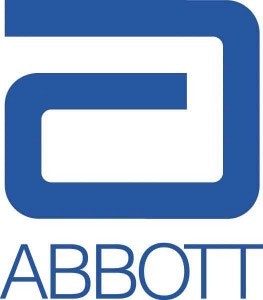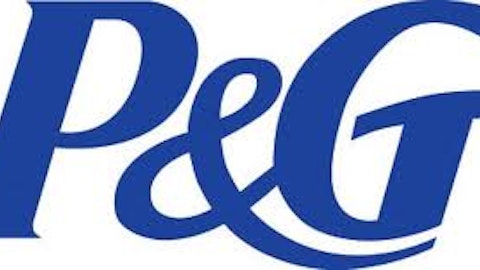
Within just a few years, I became well aware of how much money certain pharmaceutical companies made due to this disease. My family had seen the devastating effects of this disease first hand — my dad was an M.D. and my mom an RN. Many companies generate insane amounts of money from this disease each year, but how are their stocks performing and what value do they provide for investors?
The first change I became well aware of was the need to check blood glucose levels multiple times a day. One of the major test-strip manufacturers is Abbott Laboratories (NYSE:ABT), which spun off AbbVie in January this year. This spin off virtually cut the company in half, leaving the test-strip manufacturing to Abbott.
Since spinning off, Abbott Laboratories (NYSE:ABT)’s stock is up nearly 18%, and the company recently announced its first-quarter earnings. Worldwide sales increased 3.5%, driven largely by its sales in diagnostics, nutrition, and international growth which increased 6.4%, 9.0%, and 14.8%, respectively.
Diabetes care provided $316 million in revenue to the company, which is roughly 5.9% of the company’s total sales in the first quarter. Medical devices account for 24.7% of Abbott Laboratories (NYSE:ABT)’s overall sales, 23.8% of which is derived from diabetic care. The first quarter adjusted earnings per share (EPS) were $0.42, at the high end of the previous guidance. On Feb. 15, Abbott announced its 357th quarterly dividend, an amount of $0.14 per share.
Humalog is a fast acting insulin used by most type 1 diabetics. Eli Lilly & Co. (NYSE:LLY) distributes this insulin, and it was the second largest revenue generator for the company in the previous quarter. Humalog saw a 7% increase from the same-quarter last year, and accounted for 11.3% of Lilly’s total revenue. Over $632 million was spent on Humalog in Q1, but the company’s earnings were even more impressive. EPS rose 56% to $1.42, up from $0.91 in 2012.
Eli Lilly & Co. (NYSE:LLY)’s revenue remained flat as a patent expiration took place on Zyprexa. Growth in key products offset this loss, and the company expects growth throughout the year. In fact, they expect EPS to rise between 12%-16% when compared to 2012. Shareholders have enjoyed a 14% increase in the stock price so far this year.
Let’s look at why diabetes could play a major role in Johnson & Johnson (NYSE:JNJ) over time. It may not currently play as huge of a role as it does in a company like Lilly, but with time, it likely will. The incidence of Type 2 diabetes is strongly correlated to the rise in obesity, and according to the CDC (Centers for Disease Control and Prevention), 35.7% of people in the world are now obese.
Invokana, otherwise referred to as Canagliflozin, gave Johnson & Johnson (NYSE:JNJ) a major boost recently as it was granted FDA approval. According to GBI research, the type 2 diabetes drug market is expected to rise from $26 billion in 2011 to $50 billion in 2021.
Worldwide sales increased 10.7% this past quarter, led by their oncology drug sales which surged 33.2%. The company’s stock has risen over 21% so far this year, and Johnson & Johnson has a 5.2% FCF yield. This may not be cheap compared to Abbott’s 13% FCF or Eli Lilly & Co. (NYSE:LLY)’s 6.6% FCF yields, but its not overly expensive. Johnson & Johnson (NYSE:JNJ), Abbott Laboratories (NYSE:ABT), and Eli Lilly & Co. (NYSE:LLY) have P/E’s of 22.10, 10, and 15.90, respectively. Abbott edges out the others with the highest dividend yield of 3.5%, compared to 3.4% and 2.9% of Lilly and Johnson & Johnson, respectively.
The Foolish bottom line
The CDC states, “Pre-diabetes affects 35% of adults age 20 and older, and half of Americans age 65 and older.” As many as 1 in 3 U.S. adults could have diabetes by 2050, if current trends continue.” Diabetes already accounts for a large percentage of several companies’ revenue streams, but if it can continue to rise, imagine the effect it could have in the future.
Americans spend more than $200 billion annually to help control the disease or deal with its complications. These companies all provide good value and great opportunities for investors.
The article Diabetes Isn’t Good for Health, But It Can Be for Your Portfolio originally appeared on Fool.com.
Copyright © 1995 – 2013 The Motley Fool, LLC. All rights reserved. The Motley Fool has a disclosure policy.
